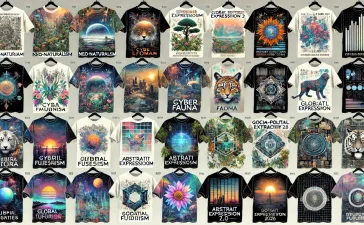Have you ever pondered why, when the clock strikes midnight on Halloween, black cats emerge as the quintessential symbol of this bewitching holiday? It’s a curiosity that has captivated many, and the truth behind the association is steeped in history, folklore, and superstition.
The Ancient Egyptians and Bastet:
Our journey into the world of black cats and their connection to Halloween begins in ancient Egypt. Here, cats were highly revered creatures, believed to possess magical qualities and a close connection to the divine. The goddess Bastet, often depicted with the head of a lioness or a domestic cat, was the protector of home and family. Her favor was sought to bring good fortune and safeguard against evil spirits.
Medieval Europe and Witchcraft:
Fast forward to medieval Europe, and the image of the black cat begins to transform. As superstitions surrounding witches and their familiars took root, black cats found themselves in a precarious position. They were often viewed with suspicion, believed to be witches’ companions or even witches themselves in animal form.
The Notorious Witch’s Familiar:
It was during the witch trials of the 16th and 17th centuries that black cats became synonymous with dark magic and malevolence. Accusations of witchcraft were rampant, and cats, particularly black ones, were frequently targeted. In some cases, they were even believed to be witches transformed. This association between black cats and witches became firmly ingrained in the Halloween tradition.
Protective Talismans:
Interestingly, in some cultures, black cats were also seen as protective talismans against evil spirits. In Scotland, for instance, a black cat’s arrival at a new home was considered a good omen. This duality of beliefs—both as omens of bad luck and protectors—further contributes to the mystique surrounding black cats.
Halloween and Superstition:
Halloween, with its roots in ancient Celtic and European festivals like Samhain, embraced the supernatural and the unknown. As the holiday evolved, black cats became an integral part of its imagery. They represented the mysterious and the eerie, a reminder of the thin veil between the living and the dead.
The Modern-Day Symbol:
Today, black cats continue to play a prominent role in Halloween lore. They appear in decorations, costumes, and spooky stories, perpetuating their image as symbols of superstition and the unknown.
The Truth About Black Cats:
It’s important to note that black cats, like all feline companions, are simply animals. The superstitions surrounding them are based on unfounded beliefs and have led to unfortunate prejudices. In reality, black cats are just as lovable and deserving of care as any other cat
In Conclusion:
The association between black cats and Halloween is a tale of history, folklore, and superstition. From their revered status in ancient Egypt to their unfortunate demonization during the witch trials, black cats have journeyed through time as both symbols of protection and harbingers of misfortune. Today, they continue to be an integral part of Halloween’s eerie charm, a reminder that, in the realm of superstition, perception can be just as powerful as reality.





